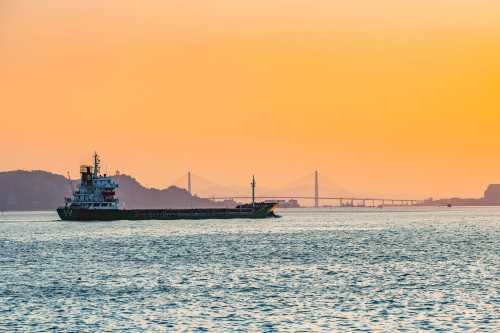Popular Trip Moments
Lying in a cream puff watching the sea | **🏛️ Must-visit in Shantou|A journey through time and space in the century-old "General Post Office Building"! European-style architecture + retro post office scene, free check-in! ** | **🏮 Shantou Small Park|Travel through the century-old commercial port! The largest arcade street in Taiwan, return to the old Shantou in the 1930s in a second! ** | Nanao!! Houzhai Town!! Seaview Homestay!! Absolutely amazing!! | The classic summer route to Nan'ao Island in Shantou from July to August can be perfectly covered in just 1-2 days | Go to a windy place | Encounter the Orange Sea of Nan'ao Island, persuade one if you can | **🌊 Shantou Nan'ao Island|A complete guide to the hidden resort paradise "Haiquan Bay"! Unbeatable sea views, celebrity check-ins, and seafood feasts are all available at once! ** | Shantou Ma Yu Island|Stunning seaside boardwalk, stroll and listen to the waves, experience the romance of this charming Chaoshan island! | 🇨🇳 Nanao Island — Stunning but Only If You’re Well-Prepared! | **🌊 Shantou Nan'ao Island|Dreamlike "Qian'ao Bay Lighthouse" check-in guide! The romantic landmark of the green-topped white tower, free admission! ** | Nan'ao Island Offbeat Travel Guide! | **🌊 Shantou Nan'ao Island|Free check-in at the hidden geological wonder "Tianzi Geopark"! A shocking dialogue between the waves and billion-year-old reefs** | **🌊 Shantou Nan'ao Island|A guide to the beautiful "Changweishan Lighthouse"! A romantic landmark in red and white, free admission! ** | **🎨 Shantou Mayu Island|A must-visit for young artists! Hidden version of the "Graffiti Art Street" check-in guide, every wall is a surprise! ** | Shantou!! A hidden courtyard retreat!! It's already reached the next level of beauty!! | A Tranquil Courtyard in the Bustling Heart of Shantou | Yu Ting Courtyard | Whispers in Wood: Exploring Guangdong's Living Carving Legacy | Shantou Zoo: A Fascinating World | In Nan'ao, it's not the Maldives | Shantou Roman Holiday | Sleep in Romance, Chaoshan Cuisine at Your Fingertips! | ~Xifeng Village Ecological Park~Beautiful environment~ | Chaoshan Cuotoujiao Grand Opera Spectacle! Don't Miss This Cultural Extravaganza | Mazu Island: A Harmony of Sea and Sky | Haven't been to Chiang Mai? Then come to Shantou! | Nan'ao Island One-Day Tour Guide! | Weekend Chaoshan Trip | Five Days and Four Nights in Shantou: A Complete Guide to Food, Drink and Fun | 3 days and 2 nights in-depth tour guide of Nan'ao Island: the blue sea and blue sky of Guangdong's Little Kenting | Help! The sea breeze on Nan'ao Island left me speechless with its beauty – here's the travel guide! | Shantou|The intangible cultural heritage I've been longing for, taking Labubu to see it together
Recommended Attractions at Popular Destinations
Popular Attractions in Bangkok | Popular Attractions in Manila | Popular Attractions in Tokyo | Popular Attractions in Taipei | Popular Attractions in Hong Kong | Popular Attractions in Seoul | Popular Attractions in Kuala Lumpur | Popular Attractions in Los Angeles | Popular Attractions in Shanghai | Popular Attractions in New York | Popular Attractions in Shenzhen | Popular Attractions in Osaka | Popular Attractions in Singapore | Popular Attractions in London | Popular Attractions in Guangzhou | Popular Attractions in San Francisco | Popular Attractions in Beijing | Popular Attractions in Macau | Popular Attractions in Bali | Popular Attractions in Jakarta | Popular Attractions in Paris | Popular Attractions in Ho Chi Minh City | Popular Attractions in Istanbul | Popular Attractions in Phuket | Popular Attractions in Chicago | Popular Attractions in Seattle | Popular Attractions in Toronto | Popular Attractions in Orlando | Popular Attractions in Cebu | Popular Attractions in Chiang Mai
Popular Restaurants in Shantou
XINGHUAWUJI | Wu | BAHELI HOTPOT | Chaoshan Taste Zhuhai Restaurant | FU HE CHENG BEEF HOTPOT | 五洲牛肉美食馆 | 陈记顺和打边炉(韩江路店) | 角茶轩 | SHAN TE RI RI XIANG | wan xiang niu rou huo guo(jinlongdian) | 贵宾牛·潮汕牛肉火锅(珠池总店) | Lin Mansion | 吴记富苑(朝阳店) | 老鬍牛肉粿 | WELUYEHUA HOT POT | Lu Dao | 公孙卤鹅饭店(金园路店) | Xinji'echang | 潮卤道卤水火锅·概念店 | 海底捞火锅(汕头群光广场店) | 海底捞火锅(汕头苏宁广场店) | 小公园老牌粽球 | 然记糖水铺(总店) | AH·KIANG | 海底捞火锅(东山生活广场店) | 海底捞火锅(F16购物中心店) | 北国饭店(广厦店) | DANXI丹喜面包·蛋糕(庐山店) | 海记猪血汤(龙眼园店) | 一头牛烤肉火锅(嘉盛店)
Popular Ranked Lists
Top 50 Must-Visit Restaurants in Bruges | Top 50 Must-Visit Restaurants in Hong Kong | Top 50 Must-Visit Restaurants in Melbourne | Popular Premium Hotels in Bang Bo | Top 50 Must-Visit Restaurants in London | Top 50 Must-Visit Restaurants in Vienna | Top 50 Must-Visit Restaurants in Hangzhou | Top 50 Premium Hotels near Bouguenais | Top 50 Must-Visit Restaurants in Xi'an | Popular Luxury Hotels Near Launceston | Top 20 Luxury Hotels near Bayan Lepas | Popular Best Things to Do in Yopurga County | Popular Best Things to Do in Tumed Right Banner | Popular Premium Hotels in Coral Gables | Popular Best Things to Do in Aksu City | Top 50 Must-Visit Restaurants in Berlin | Top 10 Luxury Hotels near South Bend | Top 50 Must-Visit Restaurants in Nanjing | Popular Premium Hotels in Memphis | Top 50 Must-Visit Restaurants in Shanghai | Top 10 Best Things to Do in Bexar County | Top 20 Luxury Hotels near Goyang-si | Popular Best Things to Do in Otero County | Popular Best Things to Do in Huocheng | Popular Premium Hotels in Goyang-si | Popular Best Things to Do in Qingchuan | Popular Premium Hotels in Sin el Fil | Popular Premium Hotels in Pasadena | Top 50 Must-Visit Restaurants in Ho Chi Minh City | Top 50 Must-Visit Restaurants in Athens
About
Payment Methods
Our Partners
Copyright © 2025 Trip.com Travel Singapore Pte. Ltd. All rights reserved
Site Operator: Trip.com Travel Singapore Pte. Ltd.
Site Operator: Trip.com Travel Singapore Pte. Ltd.



























